Mortise door lock: features of selection and installation
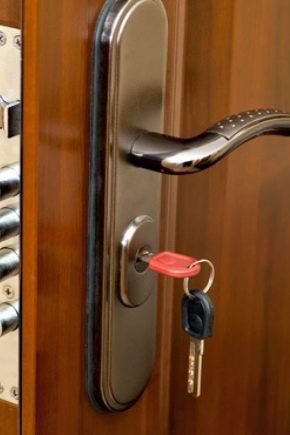
Mortise locks are the most popular devices that protect various objects and private households from intruders. These mechanisms have won well-deserved fame all over the world, they are reliable, do not spoil the appearance of the door. Mortise locks also work well with other locking mechanisms. They are on the market in great variety. It is not easy for a person who is far from technology to understand all the intricacies of their choice.
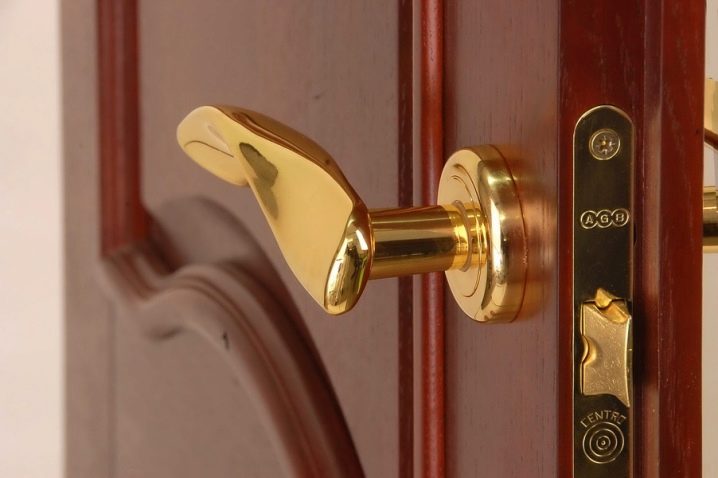
Device
The door leaf, made of a solid board, has excellent strength, it also has excellent sound insulation characteristics. It is not easy to overcome such an obstacle, therefore burglars, in order to get into an apartment, most often prefer to "solve issues" with the lock, using various master keys.
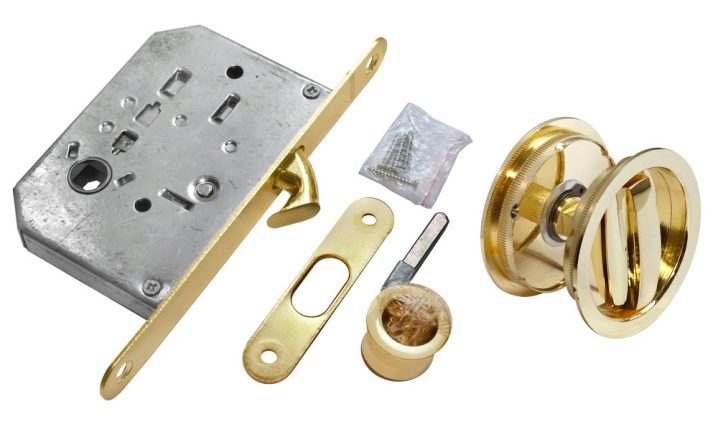
A mortise lock, if properly installed, can serve as reliable protection against unauthorized entry into a home. Many believe that the violation of the integrity of the door leaf when inserting the lock a priori violates the strength of the door. This statement is a myth. The locking device is a solid metal structure that has a solid body; on the contrary, it is able to further strengthen the door.
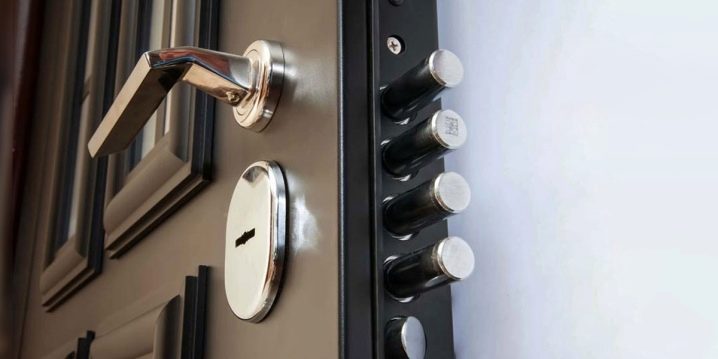
Advantages and disadvantages
Advantages of the door lock installation method at the end of the door:
- the mechanical device is reliably protected from the ingress of sand and dust;
- does not spoil the overall picture, the door remains flat and smooth.
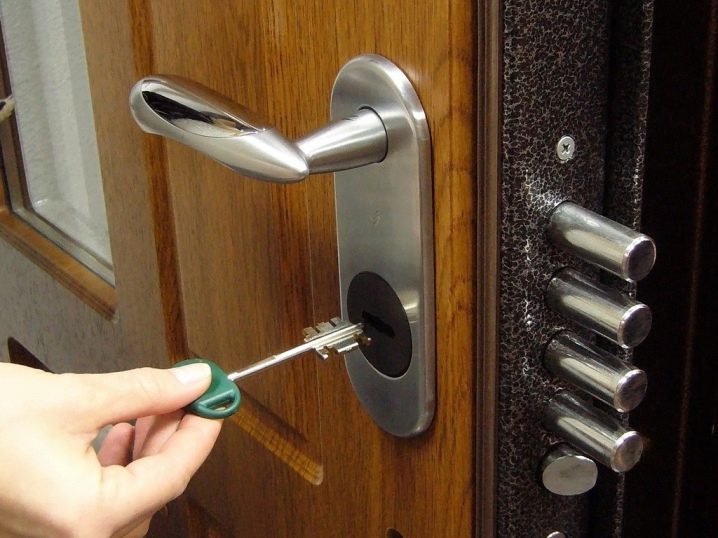
The disadvantage of mortise locks is that if the mechanism breaks down, you will have to:
- remove it by removing the door leaf from the hinges;
- repair the door.
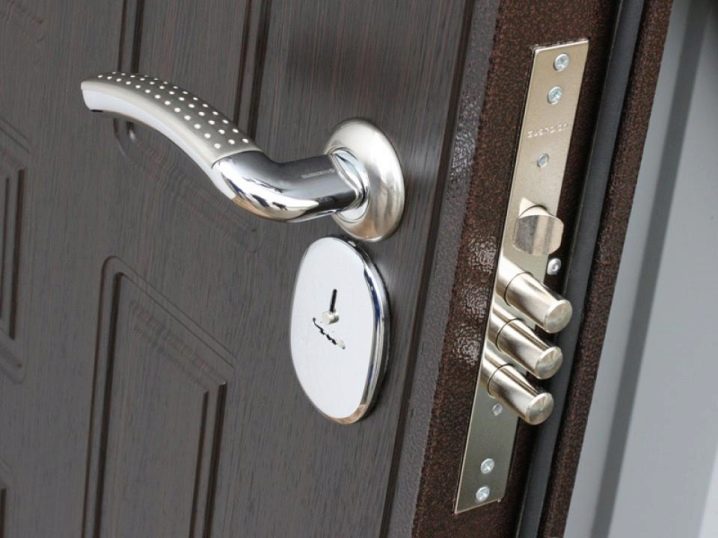
Types and sizes of mechanisms
There are only four types of mortise locks, differentiated by the reliability criterion. The most popular of them is the third, the most expensive is the fourth. The most common type is cylinder, it is also one of the most wear-resistant. Leveler devices are also often used, which have additional protection against unauthorized entry into the home. There are also mechanisms with a special electric drive.
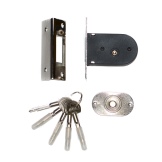
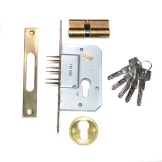
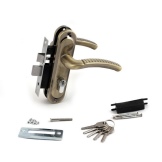
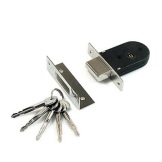
Cylinder and lever locks are widespread on all continents. They are distinguished by their high protection from the possibility of opening with master keys. An internal narrow-profile cylinder lock, for example, has a good resource - more than 50 thousand opening-closing cycles. It is easy to calculate that if the door is opened 8 times a day, the mechanism can last a quarter of a century. The durability of the device depends on the guides, which must be made of high quality steel. If this condition is met, then the mechanism will serve for a long time without any interference.
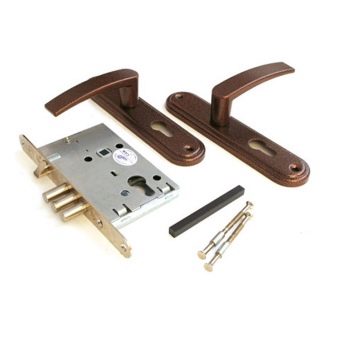
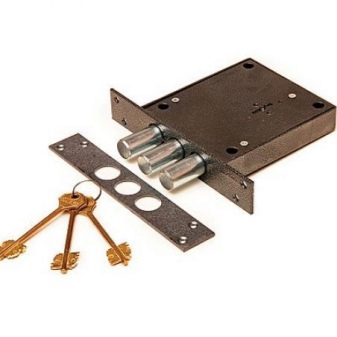
The lever lock is considered one of the most reliable locking mechanisms. Suvalds are special profiled plates, of which there are usually 3-5 pieces. Opening such a lock is possible only if the key matches a certain profile.
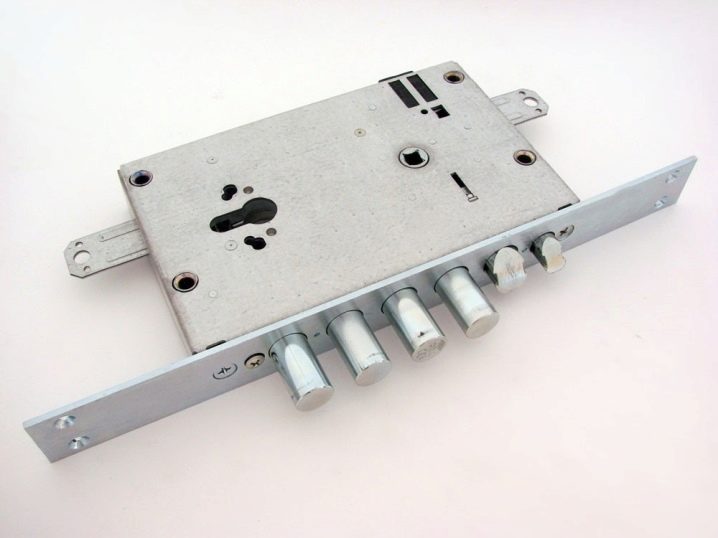
In recent years, special electromagnetic locking devices have also become increasingly used. The electromagnetic lock mechanism is installed in the door and connected to the electronic control unit. Such locking mechanisms are often combined. Such a two-system unit has a higher degree of reliability. An electromagnetic lock can, for example, work in tandem with a lever mechanism, which significantly increases the degree of protection of the room.
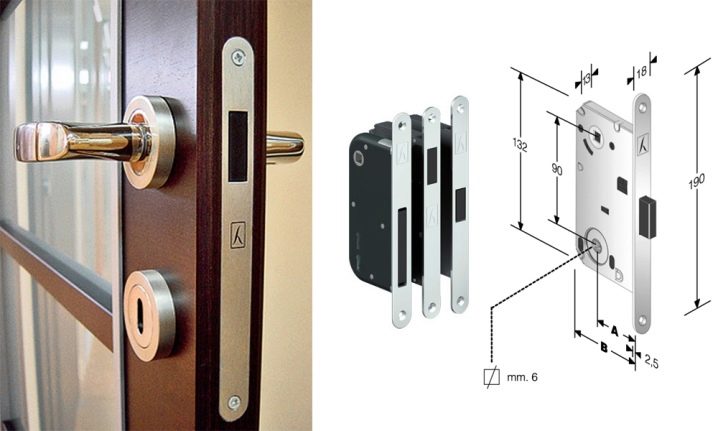
The mechanical lock also has special sensors that track the number of key turns. A magnet may also be present, which is triggered if the cylinder is partially rotated through an angle that does not correspond to the specified parameter. In this case, there is a special blocking device, and if the door is not opened within a few seconds, the locking crossbars will automatically work. They additionally fix the door leaf. It is very difficult for an intruder to find their location at the end of the door leaf. If the locking crossbars are triggered, then the master key becomes useless.

There are more expensive models with two crossbars, six or more (there can be up to ten of them in total), they are located around the entire perimeter, which provides a high level of protection.
The number of levers is directly proportional to the reliability of the castle. Six levers have mechanisms with about a million combinations. There is also additional protection, which is done using curly inserts that are combined with key grooves and fake grooves. The advantage of the lever mechanism is reliable protection against mechanical break-in. Such devices are best installed in metal doors, then the level of protection increases even more.
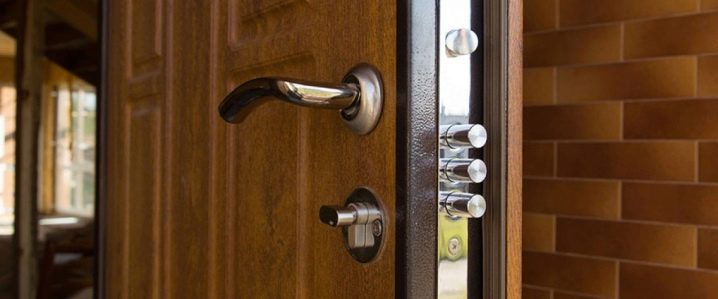
Among the shortcomings, it should be mentioned that the lever mechanism has too large a door hole, which makes it possible to "experiment" with picks. It is also possible to look through it into the interior of the room. Unpleasant odors penetrate through a large diameter hole if the room is adjacent to the kitchen.
Mortise locks are often equipped with electronic systems that can recognize an attempt at unauthorized entry. Under such circumstances, the door is automatically locked with a 90-degree rotation of a special mechanism. In the cylinder lock, instead of metal plates, small round elongated nodes resembling cylinders are used. They are ranked in height based on the given combination. The devices are quite reliable - even with a microscopic mismatch in the location of one of the elements, the device is blocked, the door does not open.
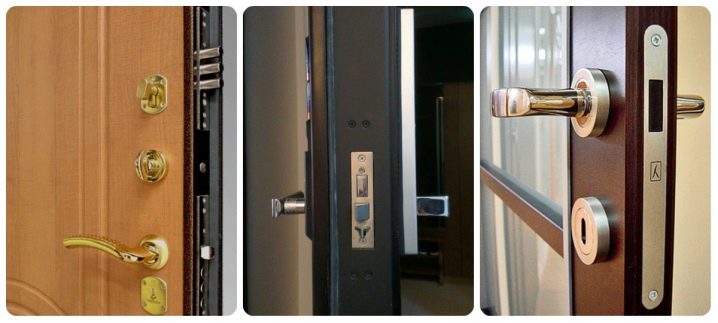
Cylindrical elements are manufactured with minimum tolerances, which is the main characteristic of the quality of the lock. For external doors, it is most often recommended to use a "mix", that is, a combination of different types of locks. This combination enhances the level of home ownership protection. Number of possible combinations of cylinder locks:
- simple - from 11 to 10 thousand;
- average - from 5 thousand to 5 million;
- complex - from 5 million to 5 billion.
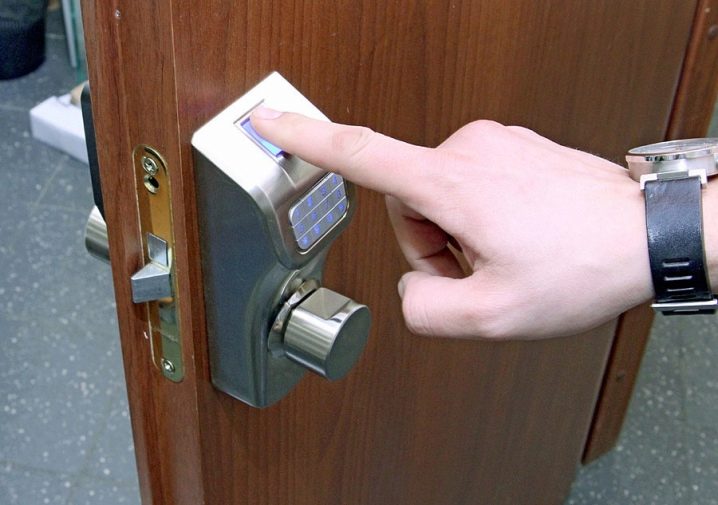
The latter can also be opened with a special card, it is almost impossible to hack them. Electromechanical locks are divided into three parts:
- persistent;
- household;
- household.
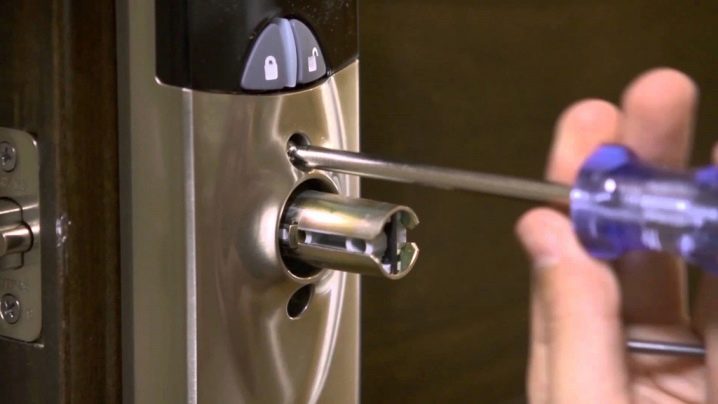
The first type is the most expensive and has a large number of levels of protection. Such locks can be used both in bank safes and in ordinary apartments. Mortise locks are:
- electronic;
- code;
- smartlocks.

The electromagnetic form works from such devices:
- typesetting mechanism;
- magnetic card.
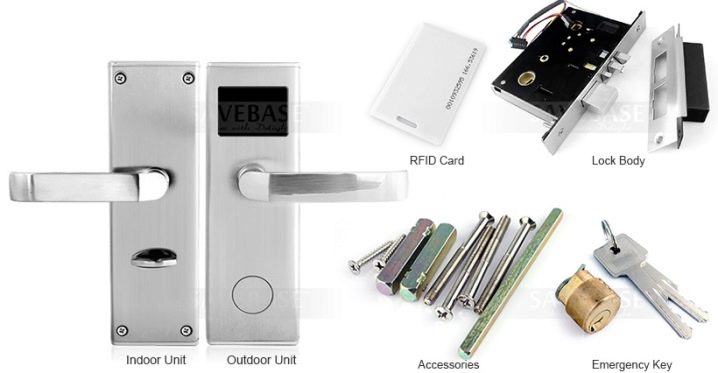
The mechanism that ensures the reliable closing of the door is the presence of 4-8 crossbars. Among its advantages, it is important to note:
- you can control such a device from a distance;
- ease of installation;
- locks can be installed on any door.
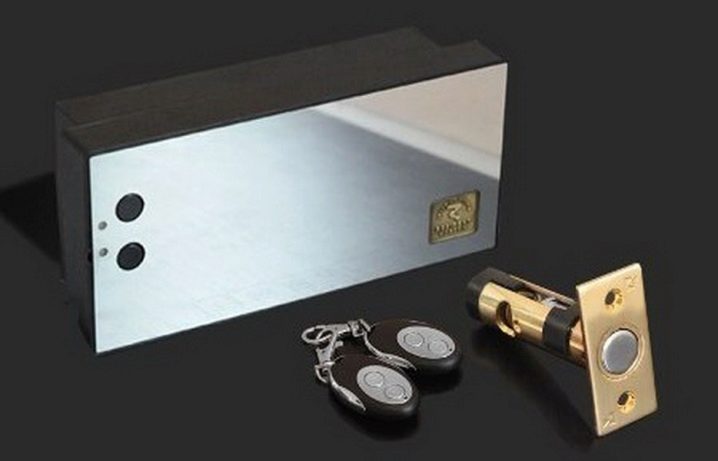
Electromagnetic locks provide the maximum degree of protection, which is ensured by the prompt change of code combinations, the difficulty of detecting the main crossbars. Among the disadvantages, it is necessary to mention the high cost of the locking mechanism. It also requires a constant power supply to operate. In recent years, smartlocks have become increasingly popular. A special electronic unit is connected to an ordinary lock, which can be operated from a mobile phone.Smartlocks are compact, reliable, with the growth of their popularity, their price decreases in direct proportion.

How to choose?
It is better to buy locks in company stores, while they must be accompanied by all quality certificates. It is best to take branded original locks that have recently appeared on the market. It is rather difficult to find the keys to such mechanisms.
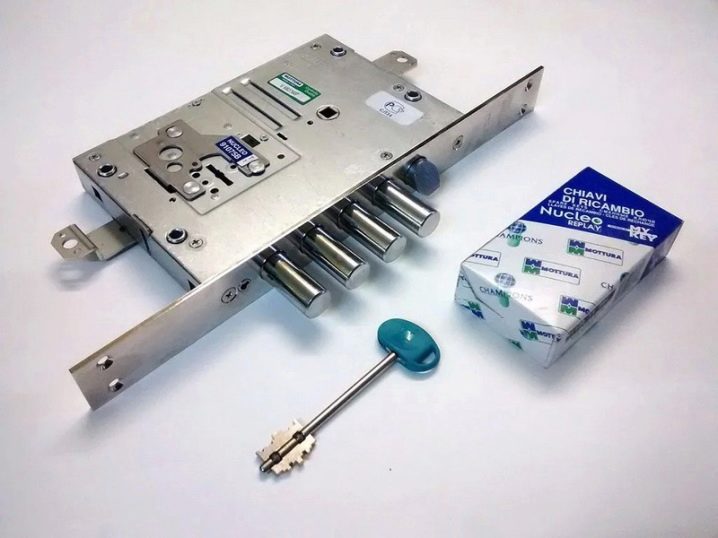
When buying, first of all, you should pay attention to the level of protection. You should take a product that has at least a third level of burglary resistance. In this case, the number of combinations should be large enough. It is also desirable that the lock could be reprogrammed. When buying, you should definitely find out if it is possible to change the cylinders (if the lock is cylinder). It is better to select a lever lock for a wooden door leaf of an average thickness; a more massive mechanism is suitable for a metal door.

How to deliver?
First of all, you need to decide where the mechanism itself will be. As a rule, the distance from the castle to the floor is not more than one meter. The mechanism is cut into the timber, which is specially provided for by the door manufacturers. There are no strict restrictions for a metal door; you can install a lock in it anywhere. The lock block is carefully measured. These parameters are transferred to the door leaf and marked out using a marker or pencil. Then the diameter of the drill should be specified, which should be one millimeter less than the calculated figure. A marker is made on the drill, taking into account the width of the mechanism. Then a number of holes are drilled. The treated area is removed with a chisel and hammer. The groove should be bored until the lock fits into it without any difficulty.
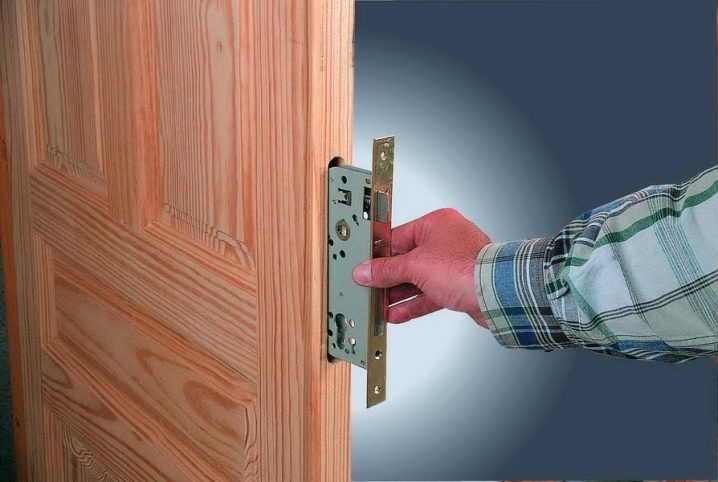
To accurately determine the place for the larva and the handle, you should attach the lock close to the door (most often this is done in relation to the outside). After defining the control points, holes are made. After that, the larva is installed and fixed with bolts. Then you need to check how well the mechanism works. It should function without any difficulty. After everything has been successfully fitted, handles are inserted, overlays are made.
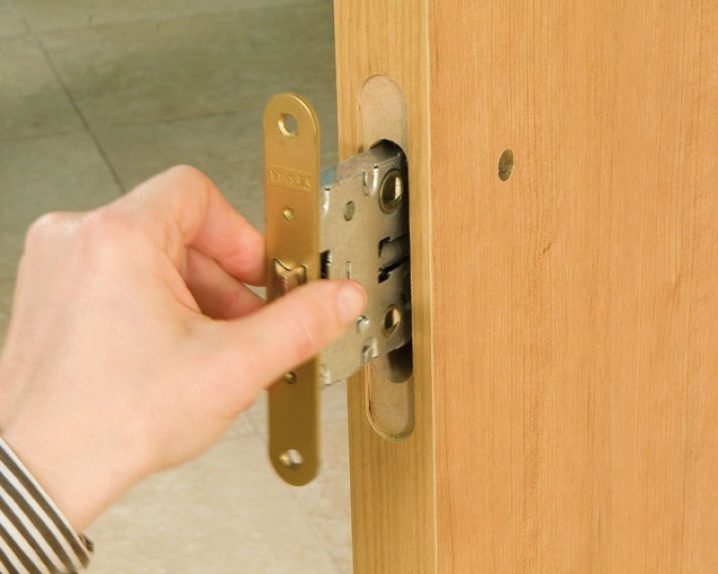
A similar installation algorithm is appropriate for installing a lock in almost any door. - from a metal fire-prevention in a shopping center to an oak entrance to an apartment. Also, such devices will help protect a PVC door with a plastic base or aluminum profile inside. Wooden doors are usually sold with already installed locks, but sometimes there are circumstances when you have to do such work with your own hands. First, you should mark everything up correctly. The height should be taken approximately 100 centimeters from the floor. A hole is drilled that will slightly exceed the diameter of the main unit (1-2 mm is enough). The basic work on the design of the cutout is done using a grinder.
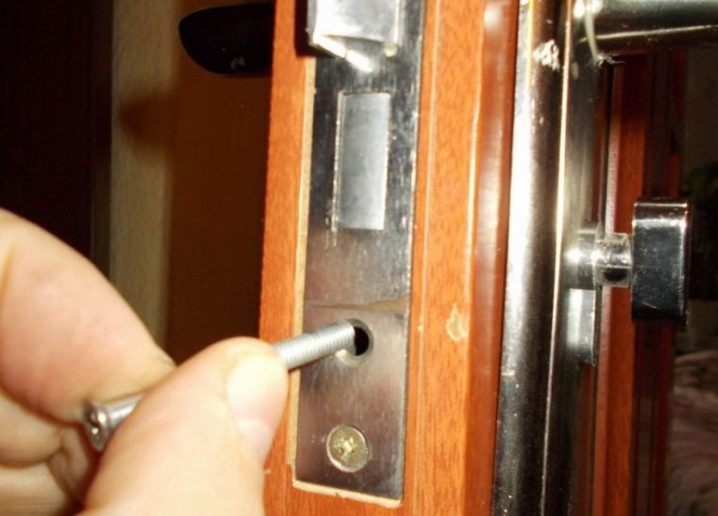
Holes are drilled separately in the place where the handles and the larva should be.
After all the recesses and holes correspond to the specified dimensions, the lock is installed, secured, tested. If there are no questions, the mechanism works without failures, then it can be fixed thoroughly. Embedding a lock is a job that requires high qualifications and practical experience from a master. It is also required to prepare the appropriate tool:
- abrasive wheel;
- drill;
- Bulgarian;
- chisel;
- hammer;
- drill;
- chisels;
- screwdriver;
- self-tapping screws.
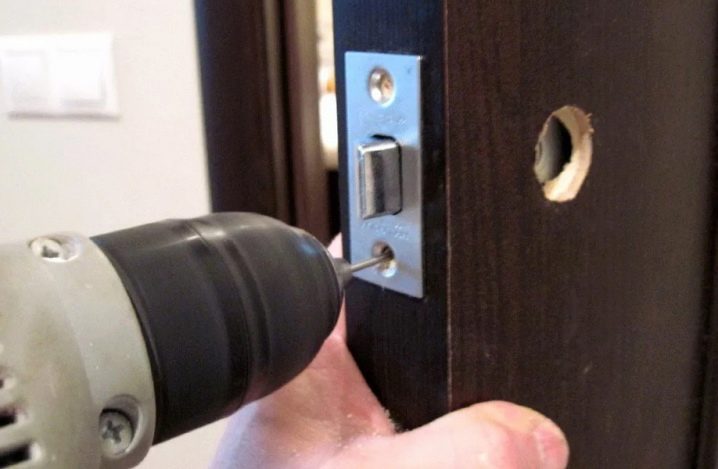
It is very easy to drill holes in the door frame for the crossbars (if they are necessary). The parameters of the crossbars are taken, markings are made on the door frame, then drilling is performed according to the markings. The hole diameter must be 1 mm larger than the bolt diameter. Mortise locks are great for keeping your property safe.In order for the device to work flawlessly for many years, you should follow all the rules for installing this mechanism, assemble it correctly and take preventive measures on time.
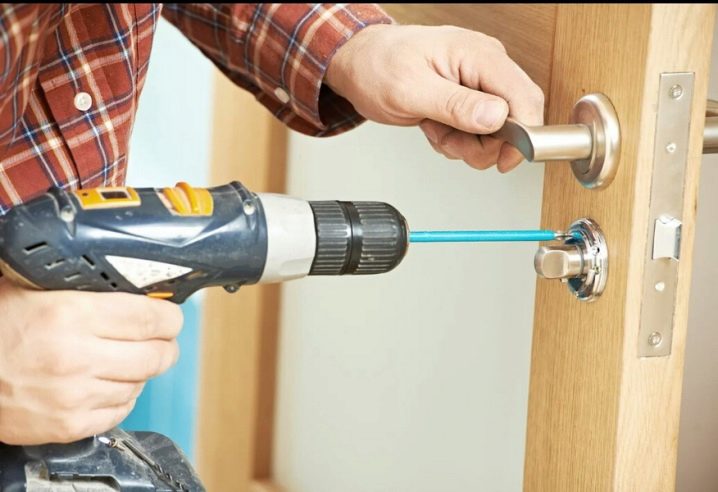
For information on how to install a mortise door lock, see the following video.













The comment was sent successfully.